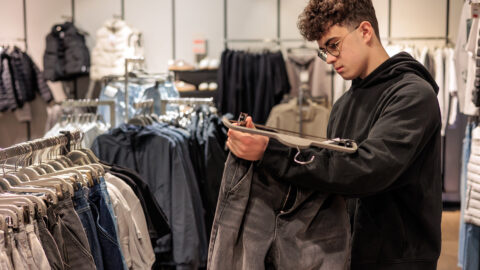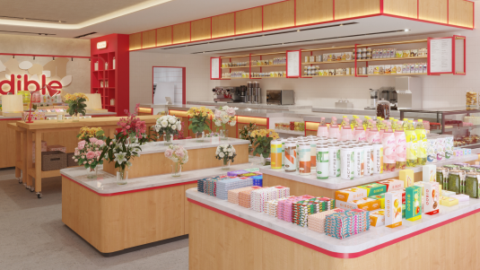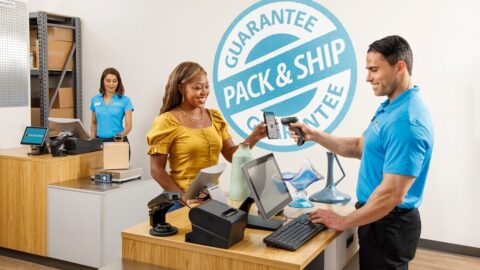The back-to-school (BTS) season, which had traditionally been confined to August and early September, has been expanding as its boundaries have blurred. In 2022, a National Retail Federation/Prosper Insights and Analytics survey indicated that 56% of consumers had started their BTS shopping by early July, with 81% planning to shop sales the week of July 11.
Perhaps more worrisome for retailers, 2022 saw a leveling-off of household spending on education-related purchases. Back-to-college spending was essentially flat from 2021 to 2022, dropping from $1,200 to $1,199 per household, and the back-to-school spending average rose just $15,from $849 to $864. With inflation concerns persisting this year, it’s likely that 2023 will see similar results.
“People have burned through their savings, and there’s a lot of inflation as well as changes in the job market,” said Jonah Ellin, Chief Product Officer at 1010data in an interview with Retail TouchPoints. “But generally speaking, consumer sentiment is still quite positive — we need to see if that holds up over the summer. The summer travel season is going to bleed people; it’s phenomenally expensive to go on the vacations that people want and deserve.”
Retailers seeking to maximize BTS sales while also maintaining their margins will need to use these three key strategies to succeed:
- Focus not just on consumer needs but also wants: While BTS messaging generally focuses on practical necessities, retailers that use customer insights to offer things shoppers really want can “win the basket” and score incremental sales to multiple members of a household, not just students.
- Invest in solutions that boost customer service and convenience: For example, Barnes & Noble Education’s “First Day Complete Program” will provide Wake Tech Community College students with all the textbooks, lab manuals and e-books they’ll need by the first day of classes.
- Study the calendar and look to the skies: Because different regions start their school year at different times, retailers will need to carefully time promotions and ensure products are available in the appropriate regions and stores. Additionally, because the weather can affect consumers’ purchasing psychology, particularly in terms of apparel, retailers can use AI- and machine learning-powered tools to incorporate weather forecasts into inventory and merchandise allocation planning.
Want to Expand Back-to-School Shopping Baskets? Appeal to the Entire Household
The expansion of the traditional BTS season is not just a matter of the calendar but also of selling to additional customers. “I think that the back-to-school season target audience has expanded,” said Matthew Katz, Managing Partner at SSA & Co. in an interview with Retail TouchPoints. “It’s still moms shopping for kids, but it’s also kids shopping for themselves, and for people in general shopping for their activities and lifestyles. It includes not just clothing, footwear and school supplies, but also housewares, decorative items and electronics. You’re targeting college students moving into apartments or dorm rooms, but you’re also targeting what you’re going to do in your home when you know you have an empty nest and you recover [the student’s] room.”
A more extended BTS season also means retailers will need to shift to more cadenced marketing tactics. “Promoting early and often is a major theme for BTS,” said Ellin. “Typically, the back-to-school shopping season produces a big surge in the beginning and then a dip in the middle, and likely a very strong close. There are procrastinators, and also some schools don’t publish what [students will need] that far in advance.”
Appealing to a broader range of shoppers will only be effective, however, if retailers use today’s more advanced personalization and customer intent tools. “The tools associated with personalization are incredibly robust; they’ve moved from just analyzing what you bought and your behavior to analyzing your journey,” said Ellin. “And with clickstream data, [online retailers] can understand far better what your purchase intent is. Being able to target who you are and what you buy, combined with purchase intent, is incredibly powerful.”
Understanding what consumers want (versus what they simply need) is critical. “Knowing your customers and leading with those items is key to winning the basket,” said Ellin. “You need to reach out to customers based on what you know and what they care about, drawing them in to your virtual or actual storefront. As you go from marketing to everyone that you want to reach about everything you offer, it’s about homing in on the personalization: What haven’t they bought yet? What’s their intent to purchase? And how do you communicate in the method they want, and the way they want to shop?”
Compete on Service and Convenience
Retailers also need to recognize that consumers, particularly younger shoppers, now expect to be able to manage virtually all aspects of their BTS shopping online. “In the case of kids going to college, you know they’re buying at home on the web and scheduling pickup for where they’ll be,” said Katz, adding that the importance of providing friction-free ecommerce requires retailers to think about “how we’re presenting product online and photographing it, as well as how to share the dimensions of the product. What technologies, such as AR, do you have to allow people to visualize and set up dorm rooms?”
Removing friction from the BTS buying experience is the goal for Barnes & Noble Education’s First Day Complete program, which is being piloted this fall at Wake Tech Community College. Dubbed Eagle Advantage, the program will provide undergraduates with access to all required textbooks, lab manuals, access codes, digital materials and electronic books prior to the first day of classes.
“As important as textbooks are, most students delay purchasing them because of cost, and many avoid purchasing them altogether,” said Dr. Scott Ralls, President of Wake Tech in a statement. “And that can have a serious impact on their chances of success. We want to give students every advantage, so we’re excited to launch the Eagle Advantage program — and to offer it free of charge for fall.
Beginning in Spring 2024, Wake Tech students in degree programs will be charged a flat fee of $27 per credit hour for the program. A full-time student taking 12 credit hours would pay a total of $324, about 35% to 50% less than if they purchased each book separately.
Back-to-School Success Depends on Localization
Another key element of personalization is timing, and this is where things can get tricky for retailers looking to scale their BTS efforts. “The drivers of this holiday are regional, even local,” said Inna Kuznetsova, CEO of ToolsGroup in an interview with Retail TouchPoints. “Different countries or regions may have tax-free holidays [related to BTS], and there can be very different timings for the start of school” within a state or even a county.
Local variations make it critical for retailers to think about BTS product assortments on a store-by-store and category-by-category basis. “BTS products must be ‘clustered’ very carefully, and they also need to be appropriately sized and placed at the warehouses at the right time,” said Kuznetsova. “Retailers need to understand the seasonality of each product within the store, as opposed to the seasonality of the entire store.
“In order to preserve margins, retailers must build demand patterns down to the lowest level,” Kuznetsova added. “That means sending only what a store needs, when they need it, to prevent overstocking.”
Even with the best planning in the world, unforeseen events, very much including the weather, can affect BTS plans — and retailers must be ready to adjust on the fly. “Retailers need real-time alerts from a system that senses those internal signals as well as weather data,” said Kuznetsova. “This goes beyond inventory management to a much more comprehensive type of retail planning based on machine learning (ML) and AI. Retailers can use ML to build their cluster for each category and help place it in the right warehouse for each product.”
Thinking ahead to future BTS seasons, AI is likely to play an even more central role across different functions, from inventory planning to marketing. “Within a year or two, I expect the state-of-the-art retailers to program in advance with AI tools,” said John Rosen, Adjunct Professor at the Pompea College of Business at the University of New Haven in an interview with Retail TouchPoints. Retailers will be able to use AI systems to say “‘This is what I want to know, this is when I want to know it, and these are the decisions we’re going to make at these points.’ They can have whatever AI system they’re using programmed to learn all that and to just make the decisions.”
AI tools also can help retailers understand and tap into the emotional basis for purchases. “The emotions underneath, revealed by AI tools, can guide you to a more powerful message for your specific target, like parents that are really concerned because their kid lost a year of education because of lockdowns,” said Rosen. “You can find a message that goes specifically after that person versus a general message of ‘We have cheaper pencils than Staples.’”















